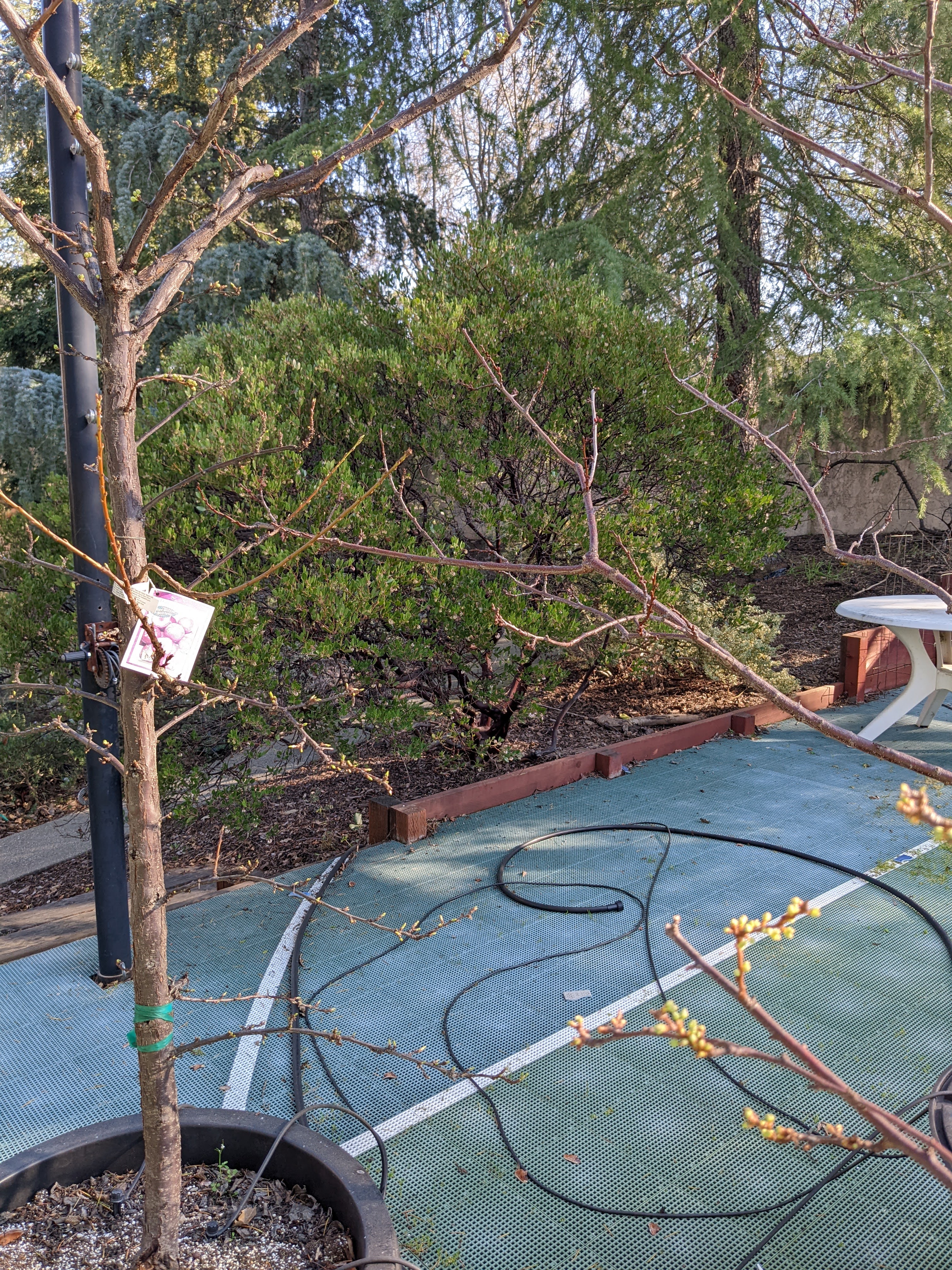Yes it is. Sent you a message just now.
Got it!
While I have the bulk jar(s) out, anyone else want to try Calypso?
Is that a pepper? I’d like some. NVM; I see it’s cilantro.
I’m in a Master Gardener class!
The class sounds like fun! It should be helpful solving problems specific to your region.
Speaking of problems: electricity went out in this area for six days, due to icy snow. 380,000 folks were out. A week ago, power was restored and we’re expecting another nasty snow-sleet-ice event, starting tonight or tomorrow. Cr _ _ ud! Hauling jugs of water to the greenhouse is not fun. A 15 gallon tank was filled in there, just in case.
On the bright side: The Ishikura onions (Allium fistulosum) planted last spring have survived the ice, snow and temperatures of 17°F ( –8°C). One variety is Red Beard, the other Evergreen. These green onions might perform well during the CA winters.
Sorry to hear that!
Is this a greenhouse at your home or a business? What temperature is the heater set for?
I have wanted to try “Japanese onions” which I’ve read will overwinter here. How long will yours be in the ground?
A winter storm should be arriving any minute…ugh! I just hope the electricity doesn’t go out!
The greenhouse is primarily for the business, Botanique. We keep the lowest temperatures, during the winter, around 55°F (13°C), which is a bit cool, but the warm growers tolerate it. Many of the carnivorous plants we grow like the cooler temperatures at night. Plants are arranged closer or farther from the heater, depending on their preferences. I use heat mats to start cuttings and seedlings, which generally don’t like the cool. Most plants would be happier with a 60–65°F (16–18°C) low temperature. Propane heat is expensive!
I’m going to leave the bunching onions in the ground as long as they survive or become too weak. We had a period with above-freezing days and I recently picked a bunch to use in soups and stir fries. They cook very quickly and are traditionally cut at a very steep angle to make “horse’s ear” slices. Give them space, as they are much larger plants than common scallions. I’m sure they will overwinter and probably keep growing during your winters.
What an impressive nursery! It’s mind boggling! Have you gotten help with your 501c3?
Thank you! There’s over 80,000 plants there. This year, I’m keeping Lemongrass starts in the greenhouse; I hope it’s warm enough for them! I keep tropicals on the dry side when it’s cool, so they are less prone to rot.
The 501c3 is on hold for now, due to time limitations. I’m trying to redesign the web site, but it’s a big project.
Understood. I am about 5 years into a 501c3.
I tried to take a picture of what I think was a red tailed hawk in my neighbor’s tree and it flew away.
It’s not perched this close before, but watching the parents training the young, and the sounds that go with has been an annual event, but still special.
We get a LOT of Turkey Vultures. Not special.
Well put! Vultures are often attracted to the smell of fish emulsion fertilizer. My Mom used it to fertilize her outdoor plants and there were vultures all over the place, dropping vulture … bombs. I had mice chew a hole in a jug of Fish emulsion, so I dumped it on a brush pile. Within minutes, vultures, what they call a “kettle”. creepy
The Free Seed Project is accepting enrollees now. I’ve been an admirer for some time. Website has extensive info for new gardeners.
First flowers on the favas, although some way ahead of others
I’m thinking of putting a bare-root semi-dwarf nectarine square in the middle of the bed above, but am concerned about keeping it small enough and I’m running out of time. Also I’d rather not sacrifice any fava beans. :grimacing .
It’s about 10’x4’.
My husband has complained for sooo long about the size of an Acoma crepe myrtle I chose for the front yard, nigh these 25 years ago. I have carefully shaped the trunks and branches and they look amazing, but it grew taller than expected. Meanwhile the Meyer lemons seem stunted.
First buds on the stone fruit. Pluots and apricots.
You got a good, early start on those! They should have good pod set before the heat kicks in. You’re right to be concerned about shading out the favas; they do best when blasted by sun on all sides, as long as it’s not too hot. Even a semi-dwarf fruit tree would take over that bed. Radical pruning to keep it small would mean fewer fruit.
In Peru, there were whole mountainsides which had been terraced, covered with huge fava bean plants, three feet tall and sturdy from the intense sun. At high altitudes, there wasn’t a heat issue, it didn’t get over 78, even in their summers! The sight was beautiful, with all the flowers, and awe-inspiring. The hard labor, to shape the sides of mountains, is hard to comprehend. Some mountains had potatoes, blooming in different colors, making the mountains striped with color, amazing.
Thanks! I called myself planting the favas to improve the soil, but deep down I wanted to eat them!
It looks like some of the fall seedings of sugar snap peas have survived. It could freeze again, but February is usually spring here.
Does anybody know what these insects on a lavtera seedling might be? They are reminiscent lacewings, but somehow, no.
I could ask the local master gardener…but wait! That’s me! JK. Not yet.
Thrips?
Not those bastards!?! These have wings and fly, although not so much. Do thrips have a winged stage?
Thank you!













